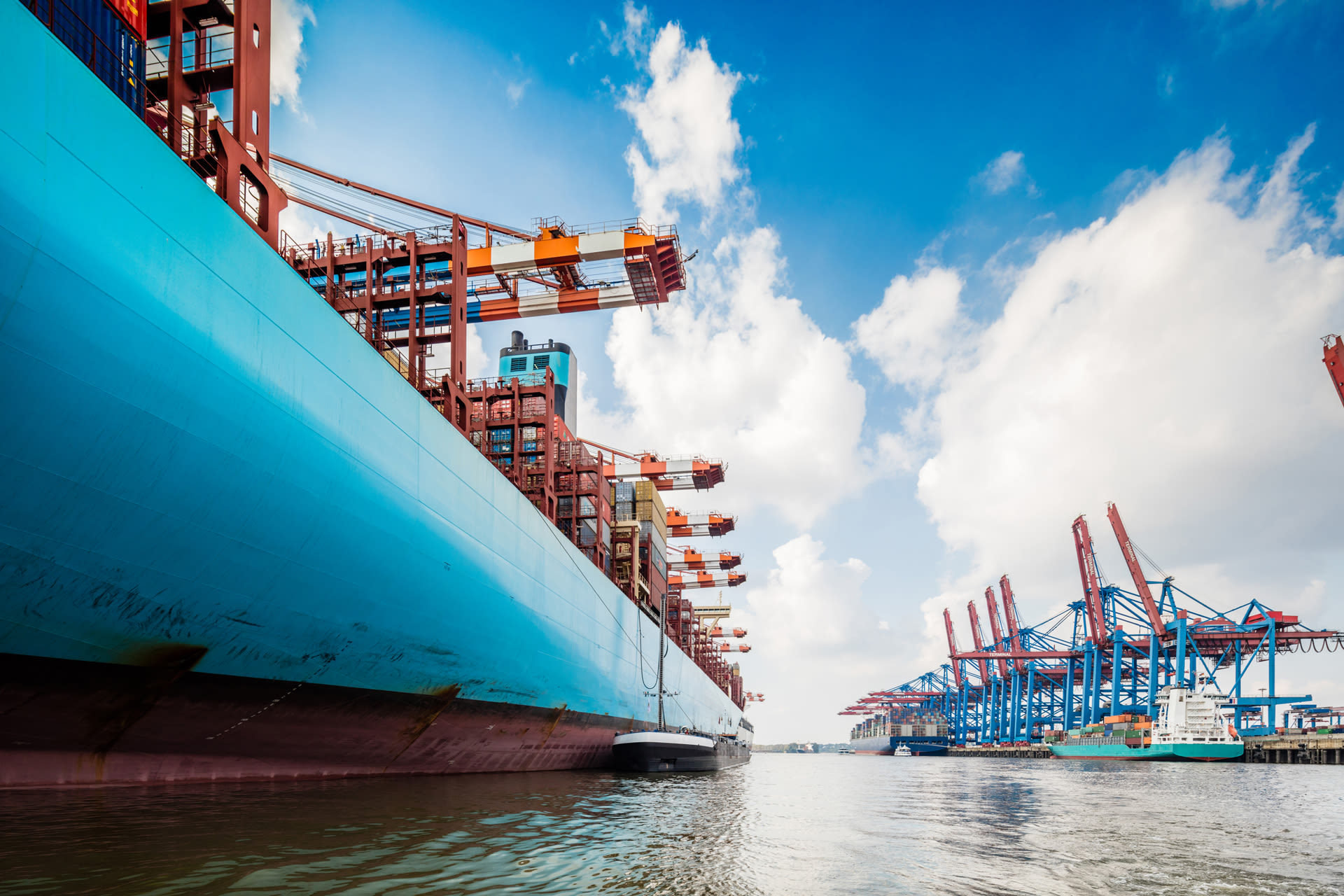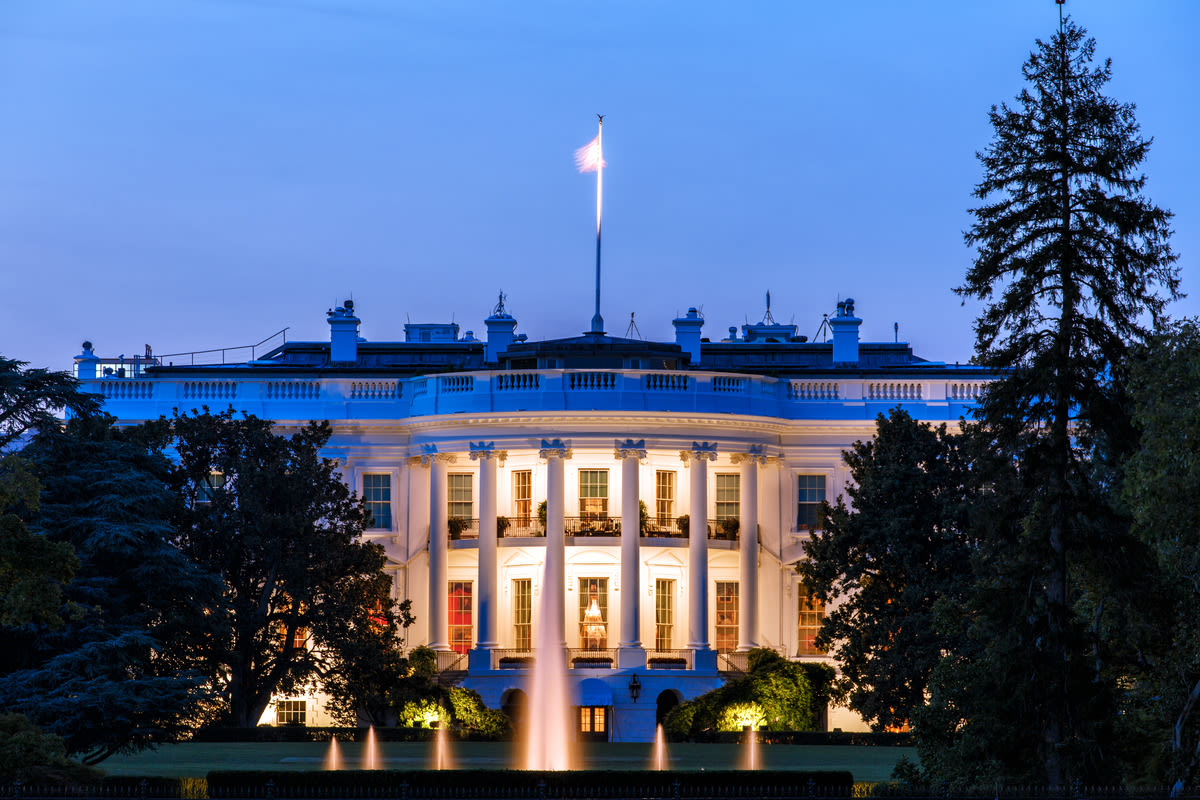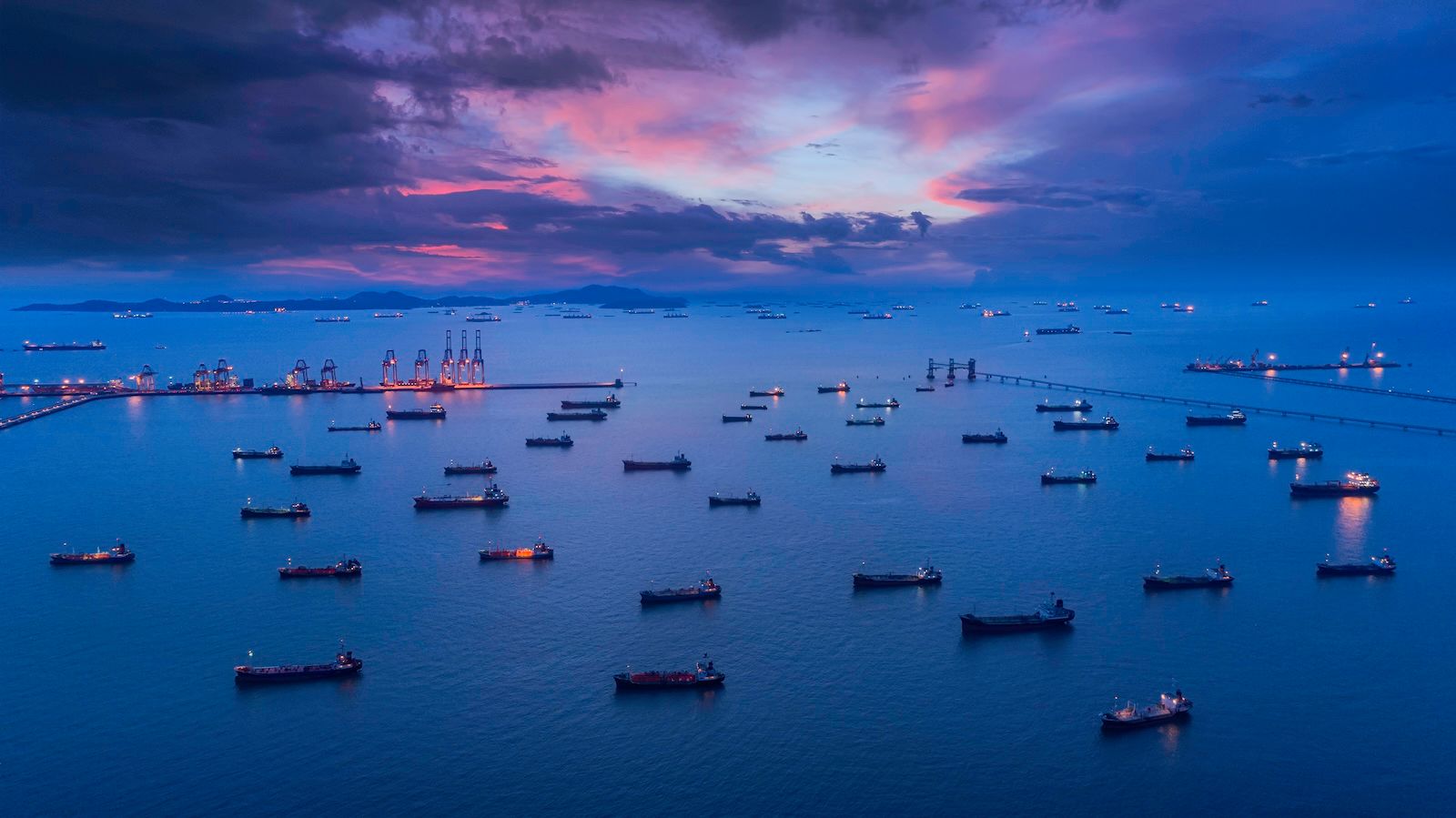
Global Logistics Update
IEEPA and Reciprocal Tariffs Loom; West Coast Freight Rates Slide
North America vessel dwell times and other updates from the global supply chain | May 17, 2023
Global Logistics Update: July 2, 2025

Trends to Watch
Talking Tariffs
IEEPA Duties Update:
- Mexico and Canada face 25% IEEPA duties with a 10% reduced rate on energy, minerals, and fertilizer products, unless claimed under USMCA.
- China and Hong Kong remain subject to a 20% IEEPA duty with no exemptions.
Section 232 Tariffs on Automobiles and Select Parts:
- A 25% tariff applies to completed vehicles and select parts. Exemptions exist for USMCA-origin goods and certain non-passenger or light truck parts.
De Minimis Update:
- The Senate passed the ‘Big Beautiful Bill’ on Tuesday, July 1, which now heads to the House before heading to the President’s desk. GOP leaders are pushing to try and get the bill to the White House by July 4. The bill would permanently end de minimis for commercial shipments from all countries, effective July 2027.
The Latest on Reciprocal Tariffs:
- Two courts invalidated the reciprocal tariffs, but appeals are ongoing and duties continue to be collected.
- With a week remaining before President Trump’s 90-day reciprocal tariff pause ends on July 9, the administration appears ready to enter that deadline with only a small number of finalized trade deals. Over the weekend, President Trump indicated he is unlikely to extend the pause but left the door open, saying, “I could, no big deal.”
- Administration officials had originally aimed for “90 deals in 90 days,” but now suggest that only a top-tier group of 10 to 12 key agreements may be ready by Labor Day. For other countries, President Trump has said he may simply “send letters” outlining their tariff rates, which could range from 10% to 50%. Canada reversed its digital tax policy to resume talks; the EU has reportedly accepted a 10% levy on many exports in exchange for sector-specific carveouts.
- On July 2, President Trump announced on Truth Social a trade deal with Vietnam outlining a 20% tariff on goods originating from Vietnam, a 40% tariff on goods transshipped to the U.S., and a 0% tariff for U.S. goods into Vietnam.
- The 10% reciprocal tariff on Chinese-origin goods remains in effect through August 11. If no formal trade agreement is finalized by that date, the rate will revert to 34 percent.
- Goods listed in Annex II and all semiconductor products remain exempt.
Get the latest updates and guidance on U.S. tariffs and trade on our live blog.
Ocean
TRANS-PACIFIC EASTBOUND (TPEB)
Capacity and Demand:
- July demand is projected to remain largely flat, with no significant uptick in volume. This suggests a potential softening compared to the surges seen in late Q2, which were partly driven by a temporary reduction in U.S. tariffs on Chinese goods and a rush by shippers to place orders ahead of possible tariff increases.
- Capacity remains at 84%-91% overall, indicating an oversupply relative to current demand. This overcapacity is likely contributing to the downward pressure on floating rates, particularly for the U.S. West Coast.
- Blank sailings are still ad-hoc, without consistent patterns or major service suspensions, suggesting carriers are managing capacity more flexibly rather than through large-scale reductions.
Equipment:
- Equipment availability across most TPEB origins is sufficient with no immediate shortages reported. This further supports the notion of a balanced-to-oversupplied market from an equipment perspective.
Freight Rates:
- Floating rates for the U.S. West Coast are continuing to decrease and are now at or even below fixed contract levels. The full removal of the Peak Season Surcharge (PSS) for July 1 for the West Coast is a significant indicator of this downward trend and reduced demand pressure.
- Floating rates for the East Coast and Gulf regions have been mitigated but still remain above fixed contract levels. While the PSS for the East Coast has been mitigated, it still remains in place.
FAR EAST WESTBOUND (FEWB)
Capacity and Demand:
- The average weekly capacity in July has risen to 293,700 TEU, an 11% increase versus June, reflecting further deployment during the peak season. However, on a weekly basis, capacity has shown a fluctuating pattern. Weeks 27, 29, and 31 each saw deployments exceeding 320,000 TEU, while Week 28 dropped to just over 220,000 TEU, possibly to build momentum for demand in the second half of July. Similarly, Week 30 decreased to 270,000 TEU.
- Since the start of July, this uneven weekly capacity deployment has led to increased cases of rollovers and equipment shortages.
- Demand continues to recover steadily, with volumes on the FEWB following their typical seasonal pattern. From April to August, shipment volumes usually increase progressively, with peak season demand largely driven by pre-holiday stocking in Europe, typically concentrated between July and August.
- Looking at this year’s performance, export values to Europe have consistently exceeded those of the same period last year since March, indicating solid demand on European routes. The relatively weak freight rates observed this year are primarily due to ample capacity rather than a lack of demand.
Freight Rates:
- Looking ahead, most carriers have not compromised significantly on July’s GRI rates. In the first half of July, the average rate for 40-foot containers has remained firm at elevated levels, with no sharp declines observed. Vessel utilization remains strong, with space fully booked 2 to 3 weeks in advance. This ongoing stability is reinforcing carriers’ confidence in maintaining higher rate levels going forward.
TRANS-ATLANTIC WESTBOUND (TAWB)
Capacity and Demand:
- PSA Antwerp remains highly congested, worsened by the Belgian strike on June 25. Hamburg is affected by rail works and summer trucking restrictions. Delays continue at key Northern European ports (Antwerp, Rotterdam, Hamburg, Bremerhaven) and Mediterranean ports (Piraeus, Valencia, Genoa).
- Demand is moderate but stable, with strong volumes from Germany, the Benelux region, and Spain.
Equipment:
- Ongoing shortages of containers and chassis persist in Austria, Slovakia, Hungary, and Eastern Germany; carrier haulage is strongly advised.
- Equipment imbalances, primarily involving 40’ units, are also reported in Lisbon, Leixões, and Mersin.
Freight Rates:
- Northern European carriers have held off on July PSS (Peak Season Surcharge) to maintain volume.
- Western Mediterranean carriers have extended current rates through July and September, though CMA continues to seek rate increases for July.
- Eastern Mediterranean carriers have postponed the July PSS.
INDIAN SUBCONTINENT TO NORTH AMERICA
Capacity and Demand:
- Capacity to the U.S. East Coast is increasing as the traditional ISC peak season begins.
- Capacity to the U.S. West Coast has become available again, driven by a sharp increase in overall capacity into the TPEB market and services that enable ISC shippers to route cargo to the U.S. West Coast.
Freight Rates:
- For cargo moving to the U.S. East Coast (USEC), General Rate Increases (GRI’s) and a PSS were announced for the first half of July as ISC shippers enter their traditional peak season. However, these increases are not holding in the market, likely due to a lack of underlying demand, especially in light of the recent reinjection of capacity into the ISC–USEC trade.
- For Indian Subcontinent cargo to the U.S. West Coast, GRIs did not hold, and the PSS has started to decline, in line with trends on TPEB lanes.
- Exports from Pakistan continue to face elevated costs and longer transit times due to the need for additional feeder services. These disruptions stem from the ongoing India–Pakistan conflict.
Air
WEEK 25: JUNE 16 - JUNE 22, 2025
- Middle East and South Asia (MESA) Tonnes Rebound +10% WoW: After a cumulative -15% drop in the first two weeks of June, tonnage from MESA origins rebounded sharply in week 25, including significant WoW recoveries from Pakistan (+32%), Bangladesh (+18%), and the Levant (+14%).
- MESA-Europe Volumes Surge +17% WoW: Flows to Europe rose notably, while intra-MESA (+12%) and Asia Pacific (+11%) traffic also bounced back. Major origin countries showed gains: India (+7%), UAE (+10%), Israel (+12%), and Saudi Arabia (+40%).
- Global Volumes Up +2% WoW, +5% YoY: Global air cargo volumes edged up, driven by MESA (+10%), Europe (+5%), and Africa (+4%). Average global rates rose +1% WoW to $2.43/kg but remained -1% YoY; MESA spot rates stayed flat WoW and -26% YoY.
- Flight Disruptions Easing: Partial normalization of Middle East airspace (Qatar, UAE, Bahrain, Kuwait) following the Israel-Iran ceasefire is aiding recovery, but full flight operations are expected to stabilize only from July onward.
(Source: WorldACD)
Please reach out to your account representative for details on any impacts to your shipments.
North America Vessel Dwell Times

Upcoming Webinars
Thursday, July 10 @ 9:00 am PT / 12:00 pm ET
Tuesday, July 15 @ 15:00 BST / 16:00 CEST
Ocean Timeliness Indicator
This week, the Flexport OTI increased for the route from China to the U.S. West Coast, and decreased for both China to Northern Europe and China to the U.S. East Coast.
Week to June 30, 2025
Transit time from China to the U.S. West-Coast increased by 1 day, rising from 34.8 to 35.8 days. Meanwhile, the China to North Europe route saw a 2.3 day increase, moving from 60.6 to 62.9 days. In contrast, transit time to the U.S. East-Coast decreased by 11.5 days, falling from 54.5 to 43.0 days.

See the full report and read about our methodology here.
About the Author






